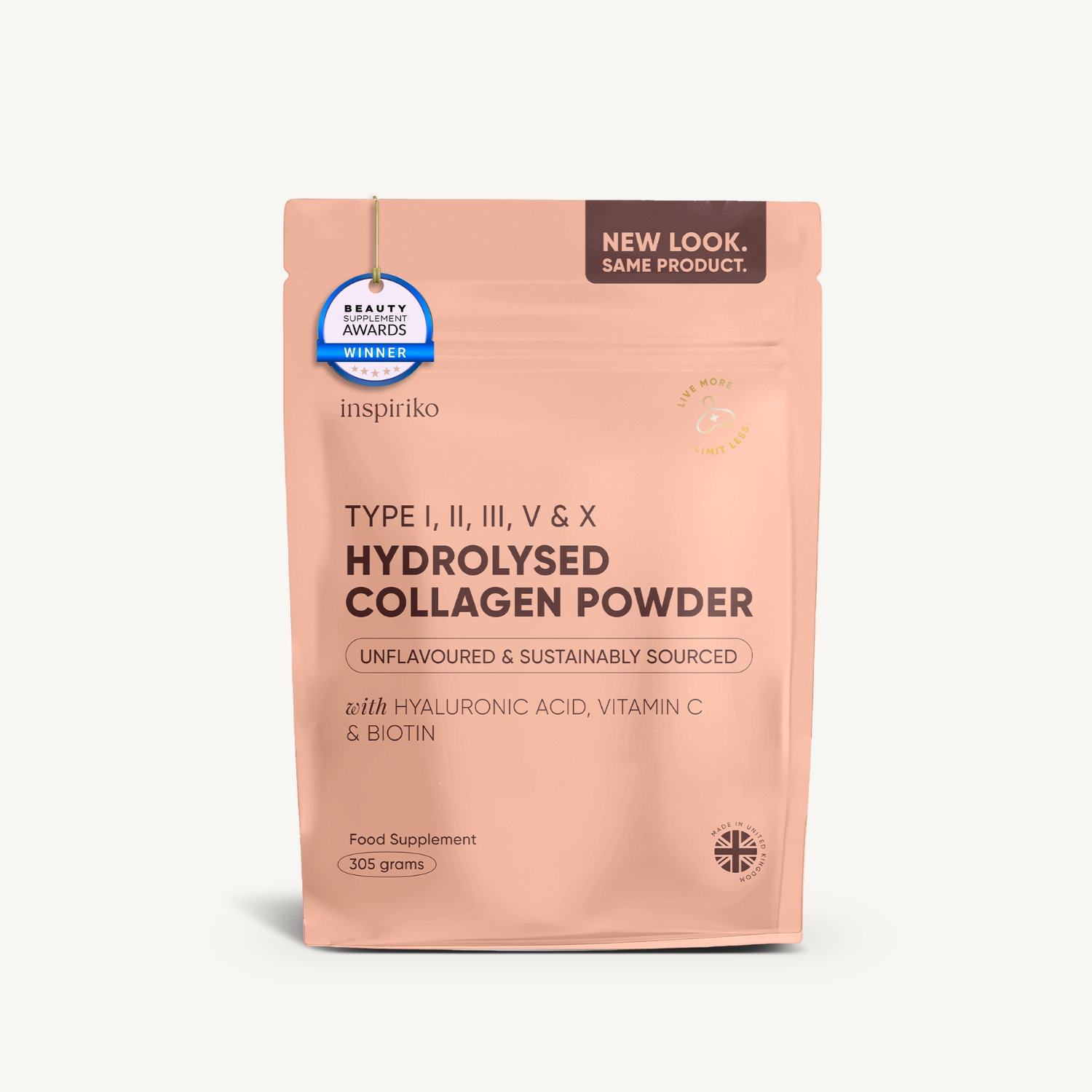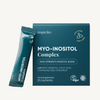Hormones play a huge role in our health and daily life. They act like messengers inside the body, regulating everything from metabolism and mood to sleep and fertility. When they’re in balance, you usually feel your best. But when hormone levels rise too high or drop too low, your body can respond with a wide variety of symptoms. This is called a hormonal imbalance.
On the other hand, some hormonal changes aren’t a “problem” at all. They’re natural life stages, such as puberty, pregnancy, and menopause. These stages involve predictable hormone fluctuations that every woman experiences at certain times of life.
So, how can you tell the difference between a hormonal imbalance that needs treatment and a natural hormonal shift like menopause? Let’s break it down.

Understanding Hormones and the Endocrine System
Hormones are chemicals that coordinate functions in the body by sending signals through the blood to organs, skin, muscles, and tissues. These signals tell the body what to do and when to do it.
Scientists have identified over 50 hormones in the human body so far. (1) Together with the glands that make and release them, they form the endocrine system. This system oversees vital processes, including:
-
Metabolism (how your body uses energy)
-
Growth and development
-
Sexual function and reproduction
-
Mood regulation
-
The sleep–wake cycle
-
Homeostasis (maintaining internal balance)
Because hormones are so powerful, even slight changes in their levels can cause noticeable effects. Too much or too little of just one hormone can trigger a hormonal imbalance, leading to a wide range of health issues.
Is collagen safe for women with hormonal imbalances? Get the full answer here.
Natural Life Stages vs. Hormonal Imbalances
Not all hormone changes are a sign of illness. Some shifts are natural life stages:
-
Puberty – hormones rise to trigger growth and sexual maturity.
-
Pregnancy – estrogen and progesterone surge to support the baby.
-
Menopause – estrogen and progesterone naturally decline, ending fertility.
In contrast, pathological imbalances happen when hormones are too high or too low due to conditions like thyroid disease, PCOS, or Cushing’s syndrome. These are not universal and usually need medical treatment, unlike natural life stages, which everyone experiences.
Feeling off after 40? Discover natural ways to restore hormone harmony.

What Is Menopause?
Menopause is diagnosed after 12 months without a menstrual period. It usually happens in the late 40s or early 50s, with the average age being 51 in the United States. As women age, hormone levels during menopause shift significantly, leading to symptoms like hot flashes, night sweats, and mood changes. (2)
Common Symptoms of Menopause
-
Hot flashes
-
Night sweats
-
Irregular or skipped periods
-
Vaginal dryness
-
Mood changes and irritability
-
Sleep problems
-
Weight gain
-
Brain fog or memory issues
Possible Complications After Menopause
Once your body produces less estrogen, certain health risks increase, including:
-
Cardiovascular disease (higher risk after estrogen levels drop)
-
Osteoporosis (weakened bones, higher risk of fractures)
-
Urinary incontinence (loss of bladder control)
-
Sexual health issues (vaginal dryness, discomfort during intercourse, reduced libido)
-
Weight gain and slower metabolism (increased fat storage, especially around the abdomen)
Menopause bloating? Here’s your ultimate guide to feeling lighter and more comfortable.
Tip: For women seeking the best supplements for hormone imbalance in menopause, a high‑quality multivitamin can make a big difference. Perimenopause & Menopause Support by Inspiriko is specially formulated with ingredients that can help balance hormones, ease symptoms like hot flashes and mood changes, and support overall well-being during this transition.

What Is a Hormonal Imbalance?
A hormonal imbalance happens when your body produces too much or too little of one or more hormones. This can occur at any age, not just during menopause. These imbalances may be temporary, for example, caused by stress or chronic, requiring medical evaluation and treatment.
Hormonal imbalances can affect various parts of your body, altering how you feel, how your body utilizes energy, and its overall functioning. They can cause problems with weight, mood, sleep, skin, periods, and fertility. Common examples include PCOS, thyroid problems, diabetes, adrenal disorders, and weight gain. (1)
-
Polycystic ovary syndrome (PCOS) causes irregular periods, infertility, acne, and excess hair growth.
-
Thyroid disorders – such as hypothyroidism (too little thyroid hormone) and hyperthyroidism (too much)- affect metabolism and energy levels.
-
Diabetes – when the pancreas doesn’t produce enough insulin or the body doesn’t use it effectively.
-
Adrenal disorders – affecting stress hormone production, such as in Cushing’s syndrome.
-
Obesity – caused by hormonal changes that affect metabolism and fat storage, such as excess cortisol or low thyroid hormone.
Because hormones regulate so many bodily processes, even small changes can produce noticeable symptoms. If you suspect a hormonal imbalance, it’s important to consult a healthcare provider for proper diagnosis and care.
7 Early Signs Your Hormones Are Out of Balance - spot them before they escalate.
Hormonal Imbalance vs. Menopause – Key Differences
|
Feature |
Menopause |
Hormonal Imbalance |
|
Timing & Age |
Usually occurs between ages 45–55 |
It can happen at any age during puberty, adulthood, or even after menopause |
|
Hormones Involved |
Mainly estrogen and progesterone |
It can involve thyroid hormones, cortisol, insulin, testosterone, growth hormone, and others |
|
Predictability |
A natural, permanent life stage |
Can be temporary or chronic, and may be reversible |
|
Diagnosis |
Diagnosed retrospectively after 12 months without periods |
Requires targeted lab tests such as hormone panels, thyroid function tests, cortisol, insulin levels, etc. |

Causes of Hormonal Imbalances Outside Menopause
-
Hormonal imbalances can happen because of stress, poor sleep, unhealthy eating, illness, medicines, thyroid problems, or environmental toxins. A lack of good sleep can affect hormone balance, which in turn can harm metabolism, immunity, and overall health, and increase the risk of weight gain, diabetes, heart problems, and other health issues. (3) (4)
-
PCOS affects hormone balance by causing an excess of male hormones, insulin resistance, and disruptions in hormone signaling. The adrenal glands add more androgens, while insulin boosts androgen production and lowers hormone-regulating proteins. These changes make PCOS different from other hormonal conditions like diabetes, thyroid disorders, and Cushing’s syndrome. (5)
Take control of PCOS with Inspiriko’s 5‑in‑1 PCOS Support, specially formulated to balance hormones, support healthy insulin levels, and promote overall well-being with a blend of nutrients and herbal support.

Treatment and Lifestyle Management
-
Lifestyle Interventions: Healthy habits like eating a balanced diet, exercising regularly, managing stress, getting enough sleep, and avoiding hormone-disrupting chemicals can help manage PCOS. These changes improve hormone balance, support weight management, and reduce symptoms, making them an important first step in PCOS care. (6)
-
Medical treatments: In polycystic ovary syndrome (PCOS), medical therapies aim to regulate hormone levels and alleviate symptoms. Hormone replacement therapy (HRT), including bioidentical hormones, low-dose estrogen/progestin, and testosterone therapy, may help manage menstrual irregularities and hyperandrogenism. However, effectiveness varies, and long-term risks require careful, individualized assessment. (7)

-
Complementary Approaches: Exercises that bear weight, like walking or resistance training, significantly improve bone strength in postmenopausal women. Along with regular exercise, adequate calcium and vitamin D support bone health, while cognitive behavioural therapy can help manage mood changes, creating a balanced approach to overall well-being. (8)
-
Individualized Treatment: Every woman’s health needs are different. Treatments should be tailored based on factors such as age, specific symptoms, medical history, and risk factors. This ensures the approach is safe, effective, and suited to each person’s unique situation, helping achieve the best possible health outcomes.
Long‑Term Health and Prevention
-
Prolonged hormonal imbalances can lead to serious complications, including cardiovascular disease, osteoporosis, metabolic syndrome, infertility, and mental health issues, requiring careful monitoring and collaboration between specialists to prevent long-term health risks. (9)
-
Preventive strategies include regular health screenings, bone density tests for women over 65 or at risk, plus lipid profiles and blood glucose checks to detect issues early and support long-term health. (10) Maintaining a healthy weight, avoiding smoking, and limiting alcohol intake are key lifestyle choices that lower the risk of prediabetes and support long-term health. (11)
-
Being proactive about your health means monitoring symptoms, scheduling regular checkups, and communicating openly with your healthcare provider. Building a trusted relationship ensures early detection, accurate diagnosis, and personalized care, helping prevent complications and supporting long‑term well‑being.
Menopause and hormonal imbalances both involve changes in hormone levels, yet they differ in cause, timing, and treatment. Menopause is a natural stage of life, while hormonal imbalances can happen anytime and may require medical care. Recognising the differences helps in addressing symptoms effectively.
Adopting healthy lifestyle habits, scheduling regular health screenings, and maintaining open communication with your healthcare provider can improve management and prevent complications. Staying informed and proactive enables women to navigate hormonal changes with confidence, protect their long-term health, and maintain a better quality of life.
References for the blog
-
Cleveland Clinic (2022) Hormonal imbalance: Causes, symptoms & treatment.
Available at: https://my.clevelandclinic.org/health/diseases/22673-hormonal-imbalance -
Mayo Clinic (2025) Menopause – Symptoms & Causes.
Available at: https://www.mayoclinic.org/diseases-conditions/menopause/symptoms-causes/syc-20353397 -
Jiao, Y., Butoyi, C., Zhang, Q., Intchasso Adotey, S.A., Chen, M., Shen, W., Wang, D., Yuan, G. & Jia, J. (2025) ‘Sleep disorders impact hormonal regulation: unravelling the relationship among sleep disorders, hormones and metabolic diseases’, Diabetology & Metabolic Syndrome, 17, article no. 305. https://doi.org/10.1186/s13098-025-01871-w
-
Silvestris, E., Lovero, D. and Palmirotta, R. (2019) ‘Nutrition and female fertility: An interdependent correlation’, Frontiers in Endocrinology, 10, article 346.
Available at: https://www.frontiersin.org/journals/endocrinology/articles/10.3389/fendo.2019.00346/full -
Dong, J. and Rees, D.A. (2023) ‘Polycystic ovary syndrome: pathophysiology and therapeutic opportunities’, BMJ Medicine, 2(1), e000548.
Available at: https://bmjmedicine.bmj.com/content/2/1/e000548 -
Khalid, K., Apparow, S. A. P., Mushaddik, I. L., Anuar, A., Rizvi, S. A. A. & Habib, A. (2023) ‘Effects of ketogenic diet on reproductive hormones in women with polycystic ovary syndrome’, Journal of the Endocrine Society, 7(10), bvad112.
Available at: https://academic.oup.com/jes/article/7/10/bvad112/7259972 -
Faubion, S.S., Crandall, C.J., Davis, L., El Khoudary, S.R., Hodis, H.N., Lobo, R.A., Maki, P.M., Manson, J.E., Pinkerton, J.V., Santoro, N.F., Shifren, J.L., Shufelt, C.L., Thurston, R.C. and Wolfman, W. (2022) The 2022 hormone therapy position statement of The North American Menopause Society.
Available at: https://www.huntingtonhealth.org/wp-content/uploads/2024/09/nams-2022-hormone-therapy-position-statement.pdf -
Mohebbi, R., Shojaa, M., Kohl, M., von Stengel, S., Jakob, F., Kerschan-Schindl, K., Lange, U., Peters, S., Thomasius, F., Uder, M. and Kemmler, W. (2023) ‘Exercise training and bone mineral density in postmenopausal women: an updated systematic review and meta-analysis of intervention studies with emphasis on potential moderators’, Osteoporosis International, 34(7), pp. 1145–1178.
Available at: https://link.springer.com/article/10.1007/s00198-023-06682-1 -
Krentz, A.J. (2023) ‘Chapter 10: Classic endocrine disorders: implications for atherosclerotic cardiovascular disease’, in Endocrinology and Metabolism Clinics of North America, 52(4), pp. 527–543.
Available at: https://www.sciencedirect.com/science/article/pii/B9780323999915000140 -
U.S. Preventive Services Task Force (2025) Osteoporosis to prevent fractures: screening.
Available at: https://www.uspreventiveservicestaskforce.org/uspstf/recommendation/osteoporosis-screening -
Jonas, D.E., Crotty, K., Yun, J.D.Y., et al. (2021) ‘Screening for prediabetes and type 2 diabetes: updated evidence report and systematic review for the US Preventive Services Task Force’, JAMA, 326(8), pp. 744–760.
Available at: https://jamanetwork.com/journals/jama/fullarticle/2783415







